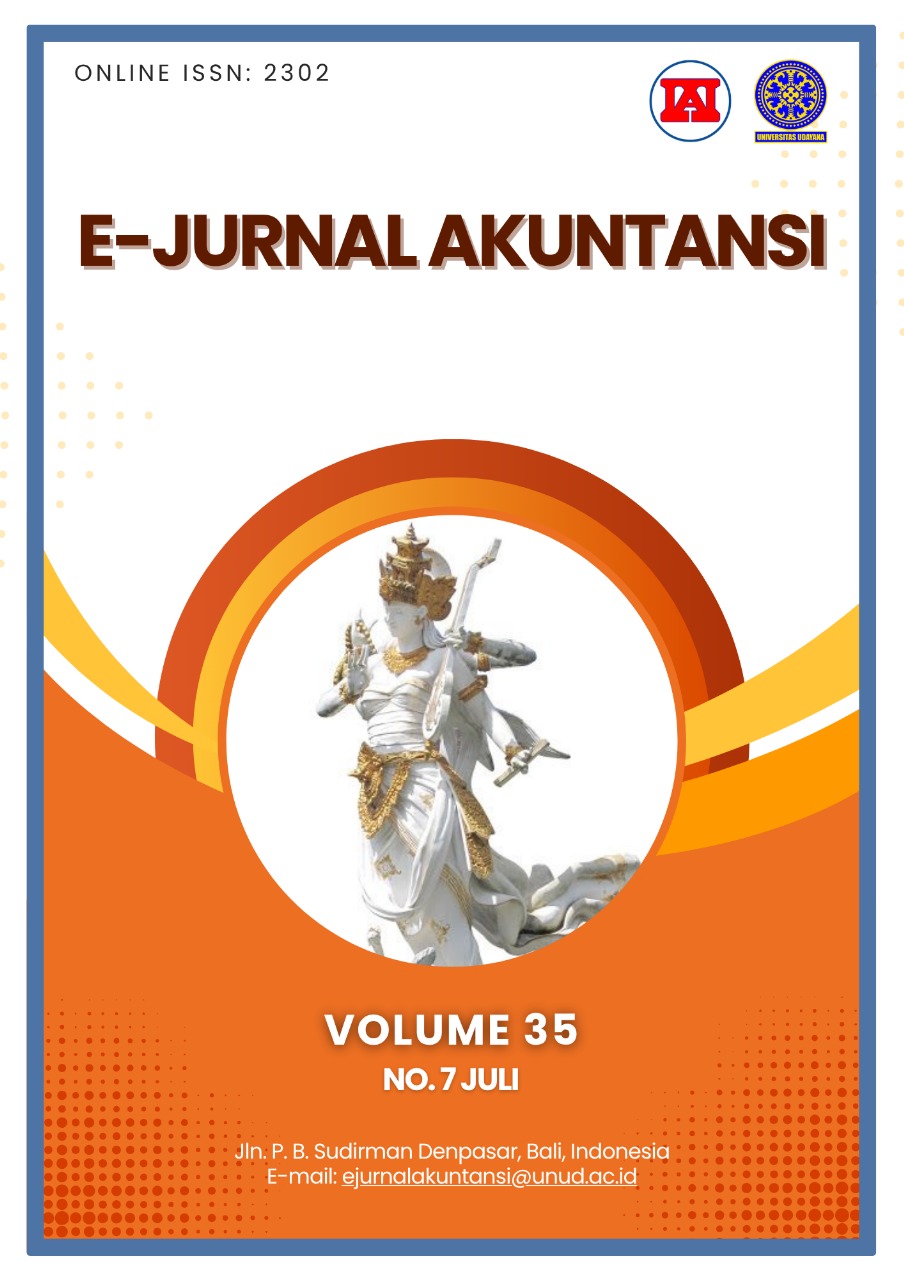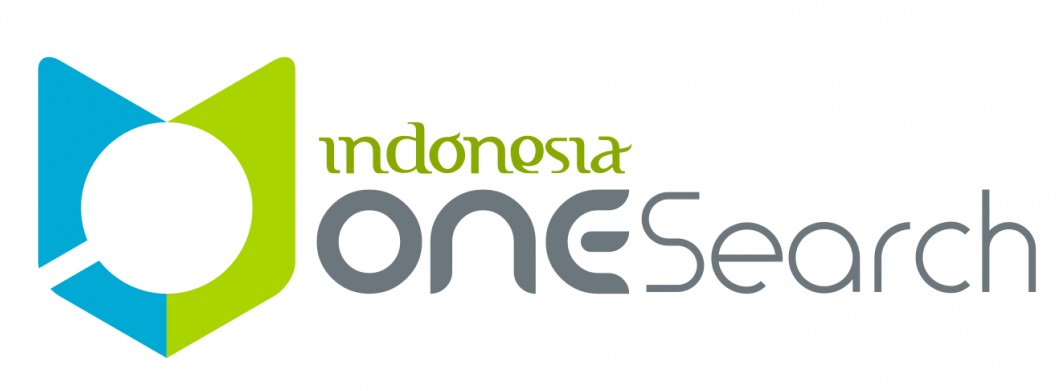Digital Technology, Cost Category, and Competitive Advantage in Islamic Bank X
Abstract
This study conducted an in-depth analysis of the competitive advantage and costs of implementing digital technology in Islamic bank X. There are differences in the use of digital technology by individual and corporate customers. Individual customers mostly use mobile and Internet banking, whereas corporate customers use a more diverse range of services, such as cash management systems. Qualitative Case study research in Islamic Bank X enables a deeper discussion of cost and competitive advantage, which prior studies have not explored extensively. The informants in this study were key employees and customers who had used digital technology. The results of this study show that three costs arise in the implementation of digital technology: analysis, monitoring, and adjustment costs. The competitive advantage obtained from the implementation of digital technology can be felt by management and customers: data security, operational efficiency, transparency and accountability, product innovation, and customer loyalty. This research contributes to policymaking regarding implementing digital banking technology, which entails cost implications and brings significant advantages for banking sectors.
Keywords: Digital Technology; Cost; Competitive Advantage
Downloads
References
Amiri, M., Keramatpanah, M. (2023). Evaluation of Digital Banking Implementation Indicators and Models in the Context of Industry 4.0: A Fuzzy Group MCDM Approach. Axioms, 12(6), 1–43. https://doi.org/10.3390/axioms12060516
Ariati, I., & Rudianto, D. (2024). Dampak Blockchain dalam Manajemen Keuangan pada Perusahaan Fintech. Journal of Economics and Business UBS, 13(2), 566–576. https://doi.org/10.52644/joeb.v13i2.1558
Autore, D., Chen, H. (Amy), Clarke, N., & Lin, J. (2024). Blockchain and earnings management: Evidence from the supply chain. British Accounting Review, 56(4). https://doi.org/10.1016/j.bar.2024.101357
Chrismastianto, I. A. W. (2017). Analisis SWOT Implementasi Teknologi Finansial terhadap Kualitas Layanan Perbankan di Indonesia. Jurnal Ekonomi Dan Bisnis, 20(1), 133–144. Retrieved from https://core.ac.uk/download/pdf/190864220.pdf
Fricilia, F., & Lukman, H. (2017). Analisis Faktor-Faktor Yang Memengaruhi Praktik Manajemen Laba Pada Indsutri Perbankan Di Indonesia. Jurnal Akuntansi, 19(1), 79. https://doi.org/10.24912/ja.v19i1.115
Garbo, A., & Latifah, H. R. (2024). Optimasi Pelayanan Nasabah Bank Syariah Indonesia Melalui Penggunaan Kecerdasan Buatan. Jurnal Masharif Al-Syariah: Jurnal Ekonomi Dan Perbankan Syariah, 9(2), 846–862.
Hakim, L., Diarto, H., & Adenan, M. (2016). Analisis Biaya Transaksi Ekonomi dan Faktor Determinan Penerapan Kemitraan Usaha Tani Tebu Rakyat (Analysis of transaction cost economics and the. Repository.Unej.Ac.Id. Retrieved from http://repository.unej.ac.id/bitstream/handle/123456789/76716/LUKMAN HAKIM.pdf?sequence=1
Hidajat, T. (2020). Financial Technology in Islamic View. Perisai : Islamic Banking and Finance Journal, 4(2), 102–112. https://doi.org/10.21070/perisai.v4i2.465
Laksono, B. A., & Nisa, F. L. N. (2024). Pemanfaatan Teknologi dalam Perkembangan Operasional Perbankan Syariah. Economic and Business Management International Journal, 1(3), 117–124.
Lantip, S. M. dan D. (2023). Pengaruh Ttransformasi Digital Terhadap Kinerja Keuangan Dengan Ukuran Perusahaan Sebagai Moderasi. Diponegoro Journal Of Accounting, 12(4), 1–11. Retrieved from https://ejournal3.undip.ac.id/index.php/accounting/article/view/41633%0Ahttps://ejournal3.undip.ac.id/index.php/accounting/article/download/41633/30094
Lopes Amaral, M. A., & Wutun, M. B. M. G. (2022). Penggunaan Teori Biaya Transaksi Dalam Perilaku Pembelian Online. JMBI UNSRAT (Jurnal Ilmiah Manajemen Bisnis Dan Inovasi Universitas Sam Ratulangi)., 9(1), 30–41. https://doi.org/10.35794/jmbi.v9i1.36605
Megawati, I. A. P., & Kertiriasih, N. N. R. (2024). Dampak Layanan Perbankan Digital terhadap Kinerja Perbankan di Indonesia. Jurnal Lentera Bisnis, 13(3), 1578–1591. https://doi.org/10.34127/jrlab.v13i3.1205
Pratwi, D. D., & Dahruji, D. (2024). Implementasi Layanan Muamalat (Digital Islamic Network) Dalam Meningkatkan Efisiensi dan Kemudahan Bertransaksi di Bank Muamalat. Nisbah: Jurnal Perbankan Syariah, 10(1), 34–44. Retrieved from https://ojs.unida.ac.id
Rachman, M. Z., & Khomsiyah, K. (2022). Perilaku Manajemen Laba Pada Masa Pandemi: Studi Pada Industri Perbankan. Owner, 6(4), 3344–3351. https://doi.org/10.33395/owner.v6i4.1116
Salmita, D. (2024). Manajemen Laba di Industri Perbankan : Suatu Pengujian Sebelum dan Saat Covid-19. Owner, 8(2), 1413–1422. https://doi.org/10.33395/owner.v8i2.1949
Scott, W. R. (2008). Approaching adulthood: The maturing of institutional theory. Theory and Society, 37(5), 427–442. https://doi.org/10.1007/s11186-008-9067-z
Shanti, R., Siregar, H., Zulbainarni, N., & Tony. (2023). Role of Digital Transformation on Digital Business Model Banks. Sustainability (Switzerland), 15(23). https://doi.org/10.3390/su152316293
Staubus, G. J. (1994). The Theory of the Firm, Costly Contracting, and Accounting. European Accounting Association, (April), 1–23.
Syaipudin, U. (2022). Manajemen Laba Pada Perbankan Konvensional Dan Perbankan Syariah. Jurnal Akuntansi Dan Keuangan, 27(1), 76–82. https://doi.org/10.23960/jak.v27i1.457
Tang, W., & Yang, S. (2023). Enterprise Digital Management Efficiency under Cloud Computing and Big Data. Sustainability (Switzerland), 15(17), 1–17. https://doi.org/10.3390/su151713063
Wang, L., & Hou, S. (2024). The impact of digital transformation and earnings management on ESG performance: evidence from Chinese listed enterprises. Scientific Reports, 14(1), 1–21. https://doi.org/10.1038/s41598-023-48636-x
Williamson, O. E. (1981). The Economics of Organization: The Transaction Cost Approach. American Journal of Sociology, 87(3), 548–577. https://doi.org/10.1086/227496
Yogaswari, D. A., & Diantini, N. Ny. A. (2024). Pengaruh Inovasi Digital terhadap Kinerja Keuangan Perbankan di Indonesia. E-Jurnal Ekonomi Dan Bisnis Universitas Udayana, 13(9), 1936–1947.
Yulianto, A. S., & Trimurti, C. P. (2023). Analisis Praktik Manajemen Laba Pada Perusahaan Syariah. Prosiding Sintesa, 6, 89–94.
Zhan, W., & Jing, H. (2022). Does Fintech Development Reduce Corporate Earnings Management? Evidence from China. Sustainability (Switzerland), 14(24), 1–18. https://doi.org/10.3390/su142416647
Zhang, Y., & Guan, C. (2023). Research on the Impact of Blockchain Technology on Real Earnings Management of Listed Companies. Open Journal of Accounting, 12(04), 85–105. https://doi.org/10.4236/ojacct.2023.124007

This work is licensed under a Creative Commons Attribution-ShareAlike 4.0 International License.

















